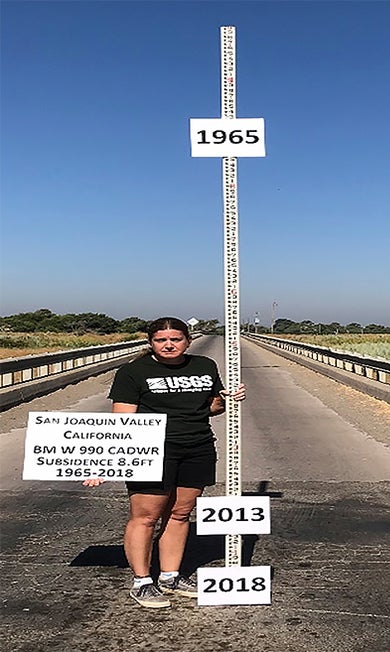
A UC Riverside study has found that as land in California's Central Valley sinks due to excessive groundwater pumping, so do local housing values.
The research found that homes in subsiding — or gradually sinking — areas lost between 2.4% and 5.8% of their sale value. In dollar terms, that translates to losses between $6,689 and $16,165 per home.
These costs totaled $1.87 billion in aggregate housing value lost across the Central Valley due to subsidence, the study estimated.
"Basically, the land is sinking and so are the property values," said Mehdi Nemati, a UCR assistant professor of environmental economics and policy who led the study. "This is the first time anyone has quantified how much land subsidence costs homeowners in this region."
The study — “The Impact of Land Subsidence on Housing Sale Values: Evidence from the San
Joaquin Valley, California” — is forthcoming in the journal Land Economics. It is co-authored by Ariel Dinar, a UCR distinguished professor emeritus of environmental economics and policy and by Michelle Sneed, a hydrologist who is retired from U.S. Geological Survey. Nemati and Dinar are with UCR’s School of Public Policy.
Land subsidence occurs when groundwater is pumped out faster than it is replenished, causing underground clay and silt layers to compact. The result is a gradual, and sometimes irreversible, sinking of the land surface.
"Think of a sponge," Nemati explained. "If you squeeze water out and never let it soak again, it flattens and hardens. That’s what’s happening underground."
The San Joaquin Valley, the southern part of the Central Valley, is a globally significant agricultural hub with flat, fertile land that stretches as far as the eye can see and supplies world markets with almonds, grapes, pistachios, citrus fruits, and tomatoes, among other crops. It has also been ground zero for such over-pumping, especially during drought years. As surface water supplies shrink, farmers increasingly tap into groundwater reserves, accelerating subsidence.
Over pumping also has been blamed for reducing downward flows to springs and streams, which damages wildlife habitat. Resulting subsidence has also damaged canals, roads, and other infrastructure.
Subsidence also reduces the storage capacity of aquifers, making it more difficult to achieve future drought resilience.
"It’s like permanently shrinking your savings account," said Nemati. "Once compaction occurs, some of the groundwater storage capacity is lost forever."
To determine the impact on home values, the researchers used satellite-based radar data to precisely measure ground-level changes. They then matched subsidence data with nearly 200,000 home sale transactions across eight counties. They applied advanced statistical models—including fixed-effects and repeat-sales analyses—to isolate subsidence as a factor influencing home prices.
Dinar emphasized that the findings carry weight beyond the housing market.
"Our research shows that subsidence is not just an agricultural or environmental issue,” Dinar said. “It is a serious economic issue that affects families and communities.”
One reason for the drop in value, Nemati explained, is risk perception: Buyers shy away from properties in areas known for land instability. Insurance limitations and higher maintenance costs from cracked foundations and buckled roads only deepen the impact.
The damage isn’t evenly spread. The biggest hits to home values were in areas that experienced the most dramatic sinking. Interestingly, the effect was more pronounced in communities with higher levels of education and where subsidence was a new or growing concern.
Nemati believes that this kind of analysis can better inform water policy. "If you can attach a dollar amount to the damage, it becomes easier to justify investment in mitigation and regulation," he said.
California has begun taking steps through the 2014 Sustainable Groundwater Management Act, which requires local agencies to balance groundwater withdrawals and replenishment by the 2040s. But Dinar warns that progress is slow.
"Subsidence has been happening for decades, but with climate change and more frequent droughts, the problem is getting worse," Dinar said.
The study underscores the importance of data-driven policy. "You can’t manage what you don’t measure," Nemati said. "Now we know that every inch the ground sinks has a real and measurable impact on people’s lives."
And it’s not just about money.
"There are families trying to build equity through homeownership," Dinar said. "When their property values decline because of something beyond their control, like land subsidence, it becomes a matter of social equity."
With nearly $2 billion in aggregate housing value lost across the valley due to subsidence, the study makes clear the stakes are high.
"It’s a wake-up call," said Nemati. "Ignoring groundwater overuse doesn’t just affect farmers and water agencies. It also hits homeowners—especially those living on sinking ground."





